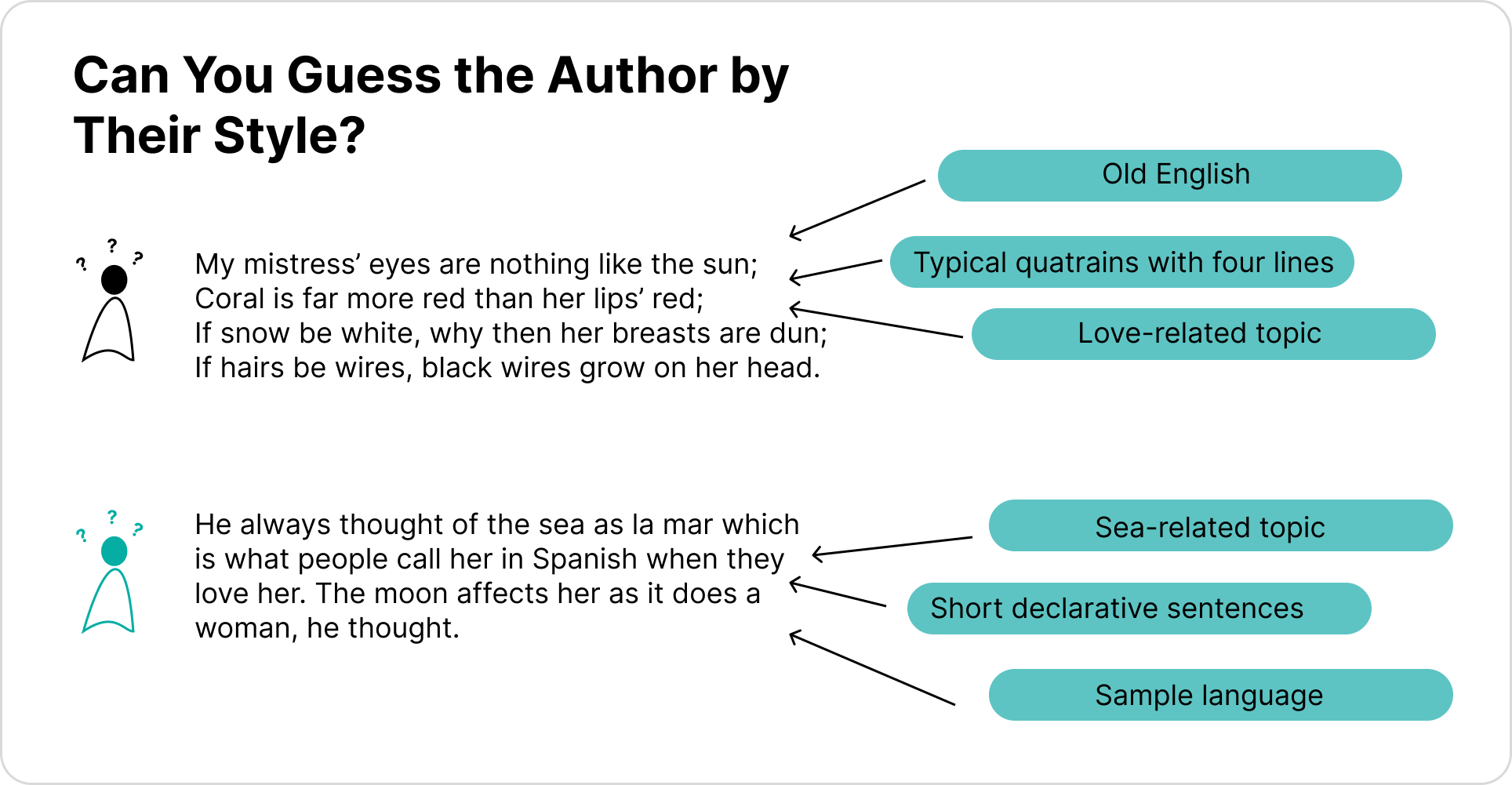Style and tone of voice are some of the most beautiful linguistic “instruments” to play with. These are also those issues that come up the most among the most annoying student questions who can’t figure out the tone of their paper. Using only these two instruments, you can drastically change the message in the text and how people will perceive it. But let’s put aside my sentiments. I assume you will not share them, but you are here for a serious reason. You probably have a revision requirement from your professor, who asks you to adhere to the MLA format paper guide, or change the style of your essay and the tone of voice. And you have no idea what they mean. I will gather here all the questions my students ask me in such cases, including 15 proven ways to lengthen essay and explain to you how to notice and change style and tone of voice in your essay.
What Is the Tone of Voice and the Style of an Essay?
Basically, the tone of voice is about how humorous, formal, or respectful the writing appears to the reader. The style of writing is about the author’s purpose and personal stylistic preferences. Since these terms are tricky and commonly misused, let’s discuss more particular explanations.
How can I understand tones of voice? Why are there so many different versions on the internet?
To understand the tone of voice, you must read as many examples as possible. There is no complete and accurate classification for tones of voice. However, Nielsen Norman Group has developed a nice system of four dimensions to identify the tone. It’s the easiest and most efficient explanation I have seen up to now. Let’s start with a neutral-toned sentence and see how each dimension changes it.
Different types of tones in writing do the same function as a human voice in real conversation. It transfers the person’s mood and attitude to the topic or another person.
Neutral sentence: “I have noticed that you missed the deadline.”
- Humor: “I am genuinely impressed with how the time seems to have no impact on you and no relation to you whatsoever. But unfortunately, our customers are more merciless, and we still have to finish that task :((( Yeah, we are not happy with it, either. So, John, when will the task be ready?”
- Formality: “I have noticed that you missed the deadline, and we must discuss this matter. Let’s schedule a meeting at your earliest convenience. Your input in this discussion is highly valued.”
- Respectfulness: “I have noticed that you missed the deadline, and I understand that unforeseen challenges can arise. We highly appreciate your input to our company and seek to make sure your workload is not overwhelming. Should there be any way I can help you with the task, please let me know.”
- Enthusiasm: “Hey! I’ve noticed a little problem with the X project’s deadline. No worries! Let’s schedule a Zoom session and fix it together!”
You may still wonder why there is no clear classification of tones of voice, especially when dealing with short essays vs long essays for college. Well, because there are many different human emotions, and you transfer all of them through different types of tones. Instead, think of types of tones as a spectrum where you can shift the lever in one direction or the other.
What is the style of writing? How many styles of writing are there?
Style of writing simultaneously refers to two linguistic concepts:
- The purpose of writing, which is usually declared through the text’s structure, wording, and literary devices.
- The personal author’s style, which is about how the writer shows the personality through the writing.
Style of writing in the meaning of its purpose includes four major categories, distinguishing essay types and formats:
- Persuasive – the text convinces the reader
- Narrative – the text narrates the story
- Expository – the text adheres to a neutral position and educates the reader
- Descriptive – the text describes something to the reader
As for the personal writing styles, there are as many styles as people on this Earth, dead and alive. You can understand a personal writing style if you have ever recognized an author by their text without seeing the name. For instance, try to guess the author just by the following few lines:

The first one is a typical style of Shakespeare. It is the passage from his Sonnet 130, which worships the mysterious mistress. Although the second one is a little bit more complicated, you can still guess Hemingway by his favorite sea and ocean-related novels, easy language, and clear short sentences.
How Does Tone and Style Affect an Essay?
By adjusting the tone of voice and the style, you can completely change how the readers engage, understand, and relate to your text. An informative essay will have a different tone when compared to writing a graduation speech. A three paragraph essay format will be styled differently from writing research questions. To see that, let’s play bingo, combining different types of tone of voice and style.
Persuasive style
- Humorous tone. The essay easily convinces the reader. The readers will not even realize they’ve been convinced, as they paid attention to the joke.
- Formal tone. The essay makes the reader take the essay points seriously. Makes the reader consider the consequences of not listening to the main idea.
- Respectful tone. The essay makes the reader feel valued and listened to. However, it still convinces the reader to adhere to the author’s point of view.
- Enthusiastic tone. The essay entertains the reader and conveys information.
Narrative style
- Humorous tone. The readers will love this essay and read it multiple times. It entertains them and makes them laugh.
- Formal tone. This essay has a specific term: a case study. Case studies make the readers learn faster through storytelling.
- Respectful tone. The essay makes readers feel engaged in the reading.
- Enthusiastic tone. The essay makes the readers feel like they are participating in a fascinating adventure.
Expository style
- Humorous tone. The essay educates the readers. However, it does so in an extremely fun and entertaining way.
- Formal tone. The essay provides deep research and proposes well-developed ways of facing particular problems.
- Respectful tone. The essay educates the reader but does so in an engaging way. The readers feel as if they are participating in a discussion.
- Enthusiastic tone. The essay educates the readers. However, they perceive the text almost as a casual conversation with friends.
Descriptive style
- Humorous tone. The essay is, in fact, an extended version of an anecdote. It makes readers laugh and share it with friends.
- Formal tone. The essay provides a detailed description of an object. The readers use it to set their opinion on the object or the topic.
- Respectful tone. The essay describes the object or the topic respectfully, with neutral words. The readers feel like the essay is a credible source, so they can trust it.
- Enthusiastic tone. The essay encourages the readers to describe something.
How Do You Choose a Tone of Voice and Develop Your Personal Style in an Essay?
Understanding what the style, tone, and voice are is half the deal. Hopefully, you have it done now. Now, it’s time to learn to use them in your writing and customize all the settings, depending on the results you want to achieve.
How do I choose the appropriate tone of voice for my essay?
As a default option, adhere to the formal tone of voice for essay writing. Depending on your expected audience, you can add the elements or particular sentences with other types of tone. That will make your essay more interesting, engaging, and “alive.” However, a formal tone is one of the major requirements for the academic essay.
“But how do I know what the formal tone is?” That is a reasonable question. Here are some distinct features of the formal tone:
- Third-person point of view. Avoid using personal pronouns in formal essay writing. For instance, instead of “I suggest that the research findings mean…” write “The research findings suggest that…”
- Complete sentences, formal grammar, and lexicon. Avoid cutting the words to their slang versions, like “we’re gonna,” “it’s,” or “kinda.” Also, always check your essay before submitting it, as sometimes you may miss slang and conversational phrases.
- Polite language. Even in the persuasive essay style, you cannot use overly brutal, bold, or aggressive language and statements. For instance, even if you sincerely believe that “foolish, short-sighted people brutally and cynically kill the planet,” you cannot write that in the formal style.
I have an easy trick on how to check whether the essay follows the standards of the formal style. Imagine the most pedantic, strict teacher you have ever met. Imagine him reading your essay. Is there something he may dislike? Edit it.
And how do I develop my personal writing style?
Unfortunately, I will not say anything revolutionary here except to read, learn about it, and practice it. However, I will give you some insights on how you do that:
- Reread your favorite authors and make notes about what makes them unique. What makes them “them”?
- Now, think about this. What makes you “you”? What personal traits, interests, likes, and dislikes can you transfer to your essays?
- There are many different literary devices, lexical groups, and grammatical structures to make your sentence customized. Learn more about these devices, groups, and structures, and pay close attention to which ones resonate with you.
I hope my explanations were helpful! Please let me know if you still have any questions or other topics to discuss!





